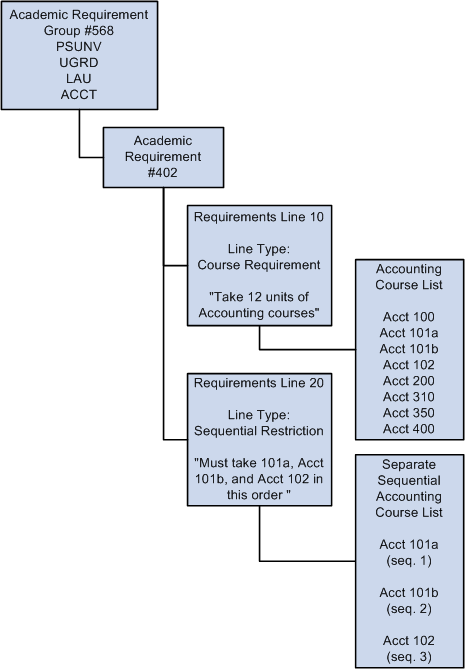Setting Up a Local Sequential Restriction Requirement
Local restriction requirements enforce course completion in a particular order, for a specific requirement group, requirement, or requirement line. With the use of more advanced derived lists, local sequential restriction requirements can also apply to a dynamically generated group of targets (such as all courses used by a particular plan). Unlike their global sequential restriction counterpart, local sequential restriction requirements have a specific target to which they apply.
Here's how to set up a simple local sequential restriction requirement:
Create an academic course list that includes the courses for which you want to control sequence. For example, Accounting 100a (course sequence 1), Accounting 100b (course sequence 2), and Accounting 200 (course sequence 3). Make sure that the course sequence value is assigned to the correct course on the Course Detail page.
Locate an existing All Stats academic requirement Line Item that requires these same courses. For example, the Accounting Minor requirement, which requires 18 units total, and points to a course list of many Accounting courses, in no particular order.
In the same requirement mentioned in step 2, add a second line item with a Line Type of Sequential Restriction.
Access the Line Item Detail page for line 20, and attach the special sequential restriction course list you created in step 1.
Save the requirement. By default, the target of your sequential restriction line item will be the current requirement. So, if you do not specify a target, you can save the requirement and simply attach it to a requirement group that applies to Accounting Minors.
The following diagram displays an overview of how to set up a local sequential restriction requirement.
Image: Local sequential restriction requirement structure
The diagram illustrates how to set up a local sequential restriction requirement.
